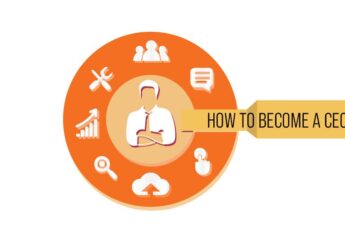What are Sustainable Commercial Strategies and Why Do You Need Them?
by Arina Smith Business Published on: 05 May 2021 Last Updated on: 06 May 2021

Companies love to tout their commitment to sustainability and a better corporate social responsibility. However, while this objective is admirable, it is important to understand how best to approach it and get things done.
Below, we will look into the significance of sustainable commercial strategies:
Understanding the Sustainable Company:
A sustainable company is one that determines its behavior, activities, products, and offerings by understanding the context within which it operates. These contexts are usually social and environmental, and they play a significant role in the company’s ability to maneuver situations and deliver on its promises at all times.
Thanks to its understanding, a sustainable company can effectively work within its social and environmental limitations and optimize its effects on society. Most times, companies that look to ensure sustainability tend to aim for a neutral or positive impact on society.
Broadly, the concept of sustainability lies on three foundations – social, economic, and environmental – also known as the three Ps; People, Profit, and Planet. Sustainability essentially looks to help a company meet its present goals while also ensuring that the chances of future generations meeting their set goals aren’t blown up as well.
In business, sustainability looks to preserve an organization’s effect on society and its effect on people.
Every business looking to become sustainable will have to focus on long-term strategies that can drive growth and solidify its positive impact in these categories. When your business operates with sustainability in mind, you frame business decisions with the future in mind. Thus, you consider factors beyond just economic or financial profit when mapping out action plans.
What is a Sustainable Commercial Strategy?
Whatever your business goals are, you need a sustainable model to drive success. So, if your company is looking to achieve long-term sustainability, it goes without saying that you will need a strategy to drive that goal forward.
Thus, a sustainable commercial strategy is a vehicle that supports the transformation of an unsustainable company into a sustainable one. Such a strategy will usually drive the company over time, with some even encompassing a plan that could span decades.
Usually, delivering a sustainable commercial strategy will rest on the following elements:
Recognizing the Context:
The first step to developing a sustainable commercial strategy will be to identify and understand the context within which you’re working. You want to understand the sustainability issues – both local and global – that could affect the organization. From there, you can focus on the priority issues that you will need to manage.
Developing a Clear Vision:
You will also need to have a picture of the company’s long-term objectives, especially in the context of the prevalent social, environmental, and economic pressures and trends.
Building Action Plans:
Now that you have a clear view of what you’re trying to achieve, the next step will be to develop an implementation strategy that contains steps and actions that will help the organization to achieve its objectives.
Setting Timelines:
You also need a timeline that is relevant to the social, economic, and environmental issues you’re trying to solve. This timeline will need to be feasible, and you should also be able to assign action items to possible milestone dates. By breaking the entire project up into dates, you can find a much simpler means of achieving the ultimate objective.
Reporting & Communication:
There is a need for meaningful and clear messages that show the transparency and progress of the sustainability project. Stakeholders – whether internal or external – will need to know more about the project’s progress and how well you’re doing from time to time. Reports allow you to share the relevant details and move the conversation along.
Sustainability Project Examples:
Over the past few years, different organizations have committed themselves to some sustainability objective or the other. Some of these include:
- Climate change: Tweaking processes to ensure a more positive impact on the environment.
- Income inequality: Building a payment structure that doesn’t discriminate based on gender, race, or other social factors.
- Natural resource depletion: Weaning off the use of scarce natural resources in manufacturing your products.
- Fair working conditions: Improving the work conditions of some of your low-income earners
- Racial injustice: Improving fairness across all races, especially within your organization
Why Focus on Strategy Development?
![]()
Every organization needs the right strategy if it hopes to move forward with any objective. Whether you’re a company seeking a loan facility or a private organization looking to attract investors, you need a strategy to push your agenda forward.
The strategy essentially represents a translation of your capacity into a wide variety of action steps that you plan to conduct over time to meet your objectives, if you plan to move from traditional, paper-based methods of operating to a fully digital structure, you will need IT strategy services to help turn your desire into actionable steps.
The importance of strategy to your sustainability goals is pretty much the same. You need to understand that you are stepping into this battle for sustainability with more parties, and they will want to analyze your strategy and assess your capabilities.
Most companies that focus on sustainability look to attract investments. If you will be looking to do that, you will also need to build a strategy for them to assess. From there, they make judgments on how well you make a candidate for investment.
So, it’s easy to see why a company looking to become more sustainable will have to build the right strategy going forward. Strategy is usually a company’s essence, and if a strategy doesn’t reflect your commitment to an objective, it will be difficult for you to get the job done and still attract the necessary investments to move forward.







































































































